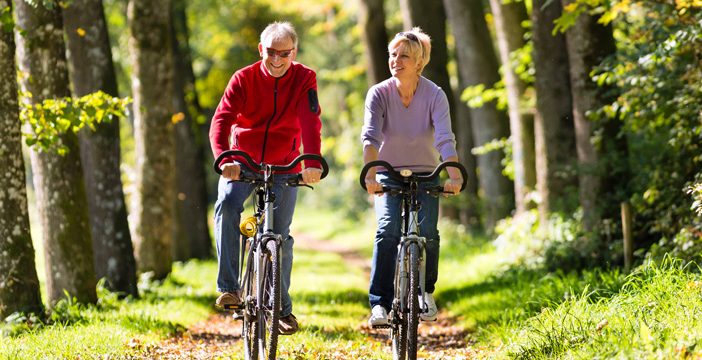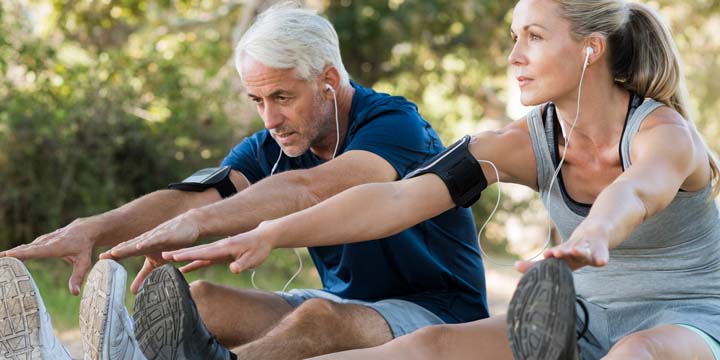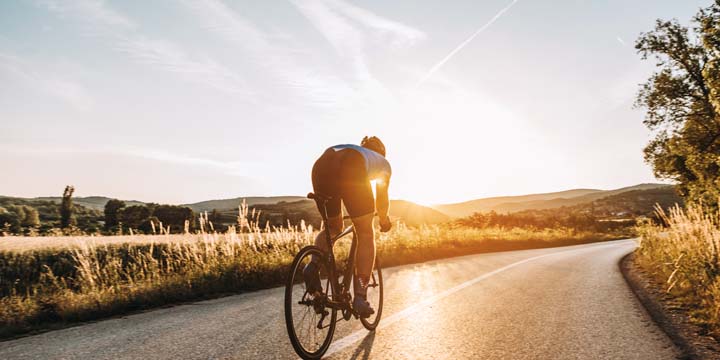
During exercise, glucose is the body’s primary source of energy. Blood glucose (sugar) response to exercise depends on whether the body needs fuel quickly or gradually. Some activities require both a quick surge of fuel as well as a slower continuous supply of fuel. The amount of energy our body needs, and when it requires this energy, will determine the ups and downs of blood glucose.
Anaerobic exercise – what is it?
- Quick bursts of activity, performed with maximum effort for a short time.
- A lot of energy is needed within a short period of time. Adrenaline (also known as epinephrine) raises blood glucose levels by stimulating your liver to release glucose. There can be a 7- to 8-fold increase in glucose production, but the body’s glucose use will only increase 3- to 4-fold.
- Blood glucose may rise during this type of exercise.
Examples of anaerobic exercise include:
- Interval training
- Weight lifting
- Circuit training
- Jumping or jumping rope (skipping)
- Throwing
- Sprinting (running, swimming or biking)
- Wrestling
Aerobic/cardio exercise – what is it?
- Continuous, repetitive movements performed at a low-to-moderate intensity that you can maintain for a longer period of time.
- The body’s muscles will rely on small amounts of glucose over a longer period of time.
- Blood glucose generally decreases during this type of exercise.
Examples of aerobic/cardio exercise include:
Regardless of whether you are doing aerobic or anaerobic exercises, the higher the intensity and the longer the duration, the bigger the effect will be on blood glucose.
Mixed anaerobic and aerobic exercise
If you didn’t see your favourite activity on the lists above, it could be because it is a mix of aerobic and anaerobic exercise.
Examples of mixed anaerobic and aerobic exercise include:
- Many team sports: A basketball player will use the anaerobic system for jumping and shooting the ball. The aerobic system is used for the continuous back and forth up and down the court.
- Martial arts
- Tennis
- Changes in intensity within a cardio activity (sprinting to the finish, going up a hill)
Other factors that lead to a rise in blood glucose
- Competition: The ‘rush of adrenaline’ that people experience before and during sports competitions can cause blood sugars to rise.
- Time of day: Our bodies are naturally insulin-resistant in the morning, leading to higher blood glucose levels. The same workout done later in the day is less likely to result in the same rise in glucose.
- Time-point of exercise: Blood glucose may rise at the start of exercise, even when doing cardio exercise. Once you start to exercise, your body will sense that you need increased energy availability and will help you out by putting glucose in your blood.
We have learned so much about blood glucose response to exercise since glucose sensors have been available. Seeing your blood glucose rise, when you were expecting it to fall, can be frustrating. But if you did not wear a glucose sensor, you probably would not even know that your blood sugar had risen during activity. A reassuring fact is that short-term increases in blood glucose resulting from exercise are unlikely to have any negative impact. And chances are your blood sugars will come down later, because ultimately all activity will eventually lower blood glucose.
All types of activity will eventually lower blood glucose
- After exercise, the body replaces energy stores by using the glucose in the blood,
- Exercise increases insulin sensitivity, both immediately and in the long-term, and
- All types of exercise build muscle mass (of course, some exercises more than others). The more muscle you have, the more sensitive your body will be to insulin
It would be a shame to stop doing the activities you enjoy because of their effect on your blood glucose. Speak to your diabetes healthcare team to discuss strategies if:
- You are at risk of low blood glucose from exercise, or
- You are worried about rising blood glucose during exercise.




